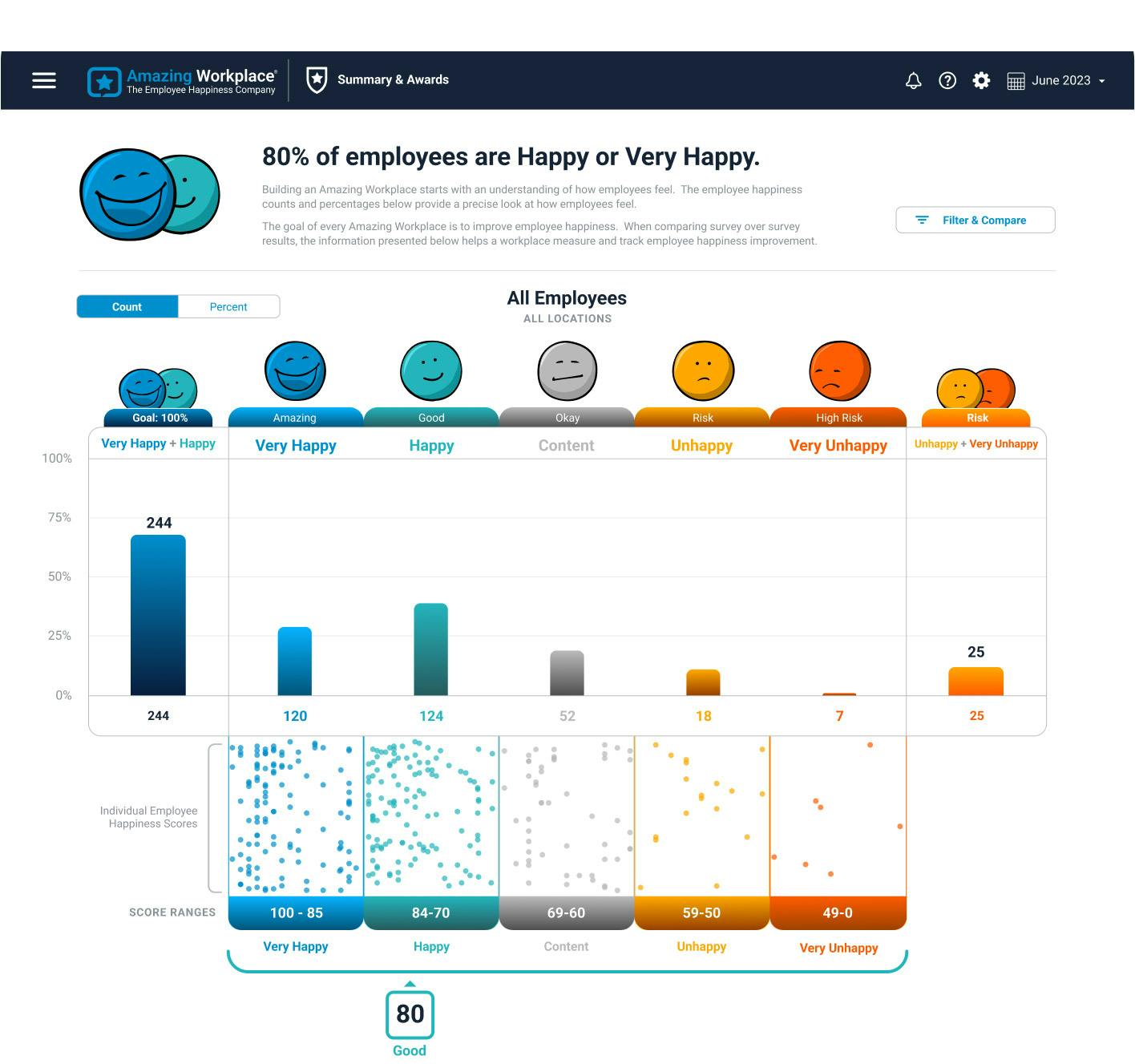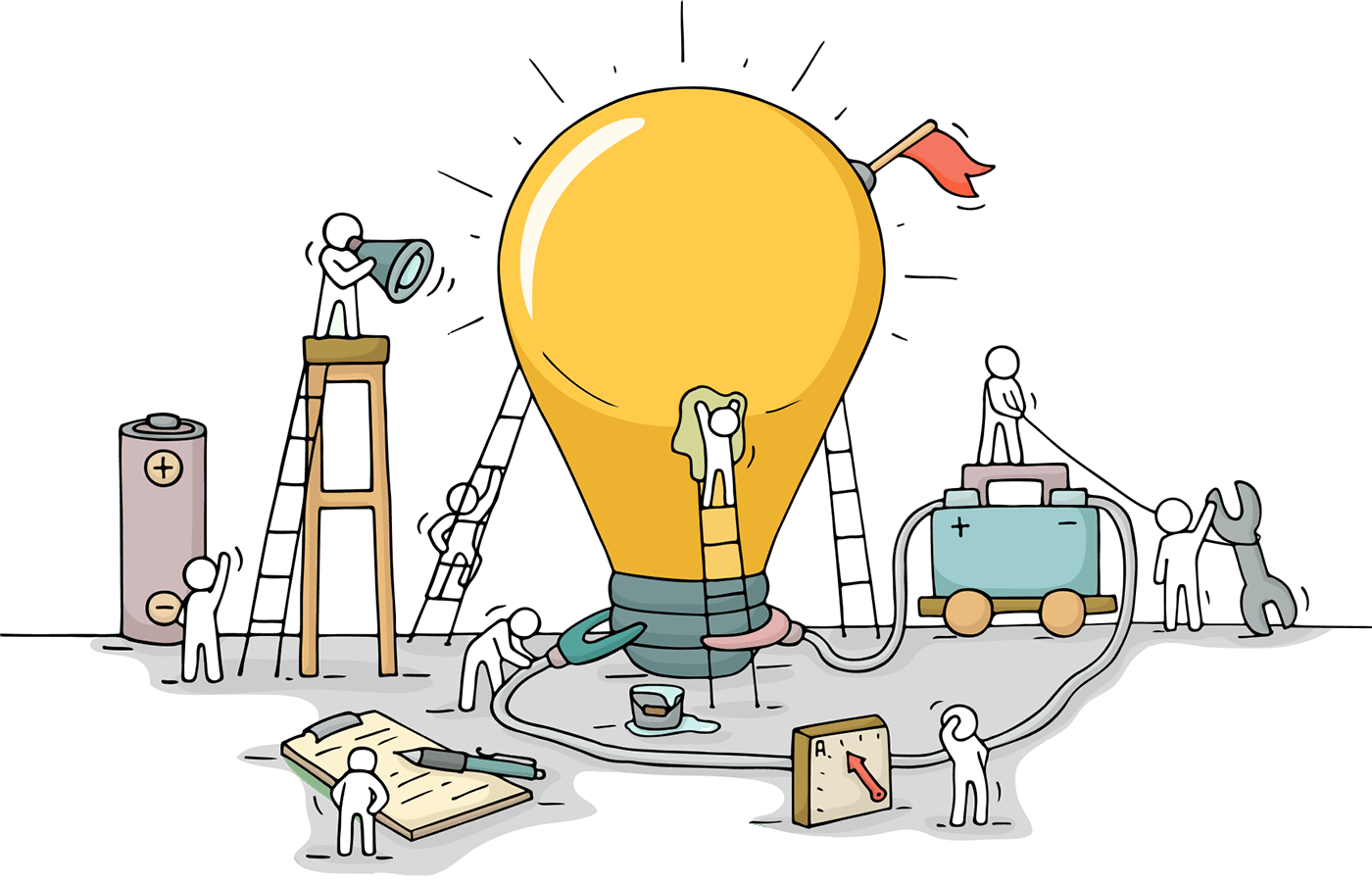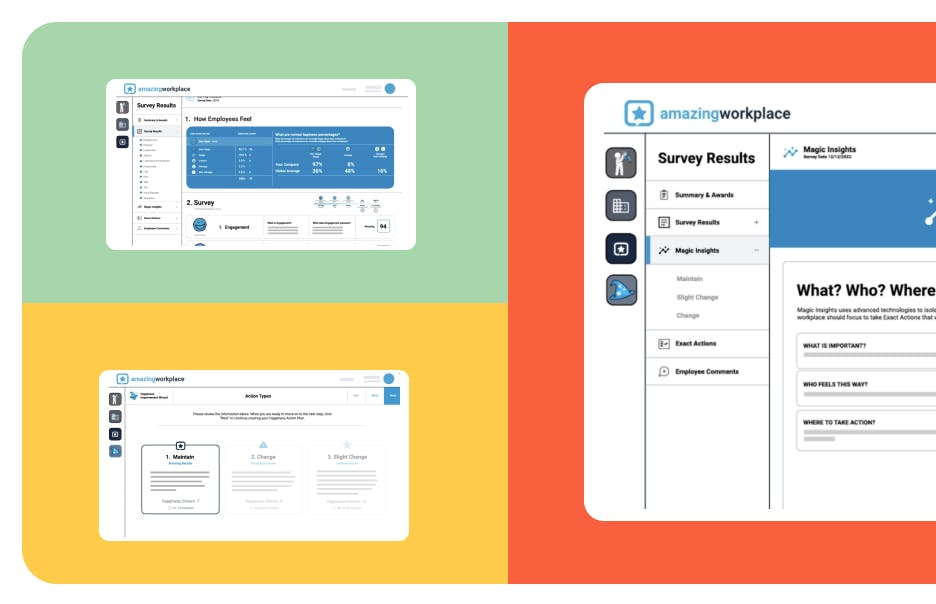Measure, improve and understand the key drivers of productivity and retention with the Employee Happiness Management System (EHMS)™.

Who is a good fit for Amazing Workplace?
When new clients come to us, they are typically broken down into the following categories:
- They want to be ranked or recognized. Becoming Amazing Workplace Certified™ is a great way to attract top talent, cultivate partnerships, improve employer branding, increase partner trust, and improve industry recognition.
- They want to eliminate inaccurate online reviews. If such reviews do not properly reflect a company’s environment, they can severely hamper recruitment, performance, and much more.
- Everything else related to company and employee wellness. The health of a company is accurately reflected in the employees. With our service, we improve company health by improving employee happiness and engagement.
What went into developing the Amazing Workplace standards?
- 20+ years of studying surveys and results
- Tens of thousands of employee survey comments reviewed
- Over 1,000 survey questions reviewed, organized, and evaluated
- Obtaining #1 rankings across several companies and geographic locations–spanning nearly a decade
- Developing a survey technology smart enough to extract patterns of behavior
- Compiling lists of actions taken by the most successful companies
- Simplifying terms to create a survey for all
Why be an Amazing Workplace?
Once you have taken the actions to become an Amazing Workplace, there is a serenity that settles over the executives and staff. There is a knowledge that your company is truly in a great place. The employees are happy and engaged, the executives are confident, the company product is improved, the customers are happy, and the bottom line has a pep in its step.
What is employee happiness?
“Employee happiness" refers to the overall contentment and satisfaction of your employees in the workplace. It means that your team members feel positive, motivated, and fulfilled while carrying out their responsibilities within the organization.
When employees are happy, they tend to:
Engage more: Happy employees are enthusiastic about their work, leading to increased productivity and dedication to their roles.
Collaborate effectively: A positive work environment fosters teamwork and encourages employees to support and help each other.
Innovate and problem-solve: When employees are happy, they are more likely to think creatively and come up with innovative solutions to challenges.
Stay committed: Satisfied employees are less likely to seek employment elsewhere, reducing turnover and the associated costs.
Provide better customer service: Employee happiness often translates into better interactions with customers or clients, resulting in higher customer satisfaction.
When employees feel valued and content in their roles, the entire organization benefits from improved morale, performance, and success.
What is employee engagement?
Employee engagement is a very important idea. Its simplest definition is the level of enthusiasm and dedication an employee feels towards their workplace. It is an outcome and can be measured.
Employee engagement was created by William Kahn from the University of Chicago in the 1990s. His definition of employee engagement was different from the definitions used today by Gallup and other survey companies. Kahn’s definition focused on creating an environment where employees could be their best selves–which he later defined as employee happiness.
What is the difference between happiness and engagement?
Engagement is simply one manifestation of happiness. In other words, happiness is the senior goal that leads to many qualities, engagement being just one of those.
This is why employee engagement is only one of twelve areas measured by our Employee Happiness Survey™. While employee engagement is very important, so is Productivity, Leadership, Culture, Purpose, Communication, and more. We call these “Critical Workplace Areas” because each of them is very important to workplace success and employee happiness.
What is company culture?
Company culture refers to the shared values, beliefs, attitudes, and behaviors that shape the work environment and define the organization's identity. Company culture significantly affects the health of an organization. Here's why creating a positive company culture is crucial:
Productivity and performance: A positive culture motivates employees to work harder and be more productive. When employees feel valued and connected to the organization's mission, they are more likely to put in extra effort to achieve their goals.
Attracting top talent: A strong company culture can act as a magnet for top talent in the industry. Potential candidates are more likely to be drawn to an organization that has a reputation for being a great place to work.
Brand reputation: A positive company culture can enhance the organization's brand reputation. Customers, partners, and stakeholders often prefer to associate with companies known for treating their employees well.
Employee health and well-being: A positive culture promotes a healthier work-life balance and reduces stress and burnout among employees. This leads to improved mental and physical health, which, in turn, contributes to higher job satisfaction and productivity.
Adaptability to change: In a positive company culture, employees are more adaptable to change and are more likely to embrace new initiatives and strategies, helping the organization stay competitive and responsive to market demands.
How do you measure employee happiness?
Simply put, you ask. Amazing Workplace’s Employee Happiness Survey™ delivers meaningful questions about how employees feel. With interactive screens that present “happiness feelings,” employees can express their feelings about the things that matter most to them.
Removing all doubt, Amazing Workplace’s survey system uses advanced technology to provide survey participants’ real time feedback. At the end of each survey section, employees are presented with a happiness feeling based on their answers and are candidly asked if it accurately represents how they feel. Employees have an opportunity to confirm or change their happiness feelings to more accurately represent how they feel. At the conclusion, you, the manager, receive the most comprehensive and actionable information available from an employee survey.















